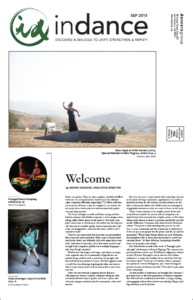 Bodies are perfect. They are also complex, colorful and filled with tons of cool applications. Each body is the ultimate super computer, efficiently organizing 37.2 trillion cells that are in action 24 hours a day. As complex as our bodies are, we easily reboot with some rest and automatically update our operating systems.
Bodies are perfect. They are also complex, colorful and filled with tons of cool applications. Each body is the ultimate super computer, efficiently organizing 37.2 trillion cells that are in action 24 hours a day. As complex as our bodies are, we easily reboot with some rest and automatically update our operating systems.
The body recharges on solar and lunar energy and has built-in cameras with limitless capacity to store images; often taking selfies (think dancer in the mirror). Our body computer stores tons of information (the useful and the impractical) that can be recalled rapidly. And at times this data will come out fragmented—what was the name of that book I wanted to read?
There’re also some really fun tools that are pre-installed, like touch and voice activation. These come in handy when used in the studio and definitely help with many day-to-day tasks. And what’s especially cool is that when started early enough body computers quickly learn multiple languages—take that Google translate!
Models now last longer and longer and, based on usage, some upgrades may be recommended. Upgrades for me include being outfitted with a metal hip on my right side that will likely last another 15 years. The first upgrade went so well, I’m even thinking of getting the other one done to relieve some intense bone on bone action due to user wear and tear.
I also love my external computer devices that provide numerous ways to connect, while providing me with extremely efficient ways to gather and store copious bits of words, images, numbers and of course music, video and movies.
Our lives are now so intertwined with technology that the sci-fi notion of borgs (cybernetic organisms) in our midst is probably not that far off. And yet, as tech advances we are still a body-based culture and I believe that as consumption of gigabytes increases so does our need to focus on the body.
Dance forms continue to be taught, passed down and created from scratch—in person and on computers—in myriad ways that represent the complex nature of life today. Many create dances to honor a spiritual earthly life and this month M?hea Uchiyama talks about how in Hawaiian culture “The point is understanding who you are in relation to your community and the community is understood to be not just your people but the plants and the air and the mountains.” Writer Sima Belmar draws out how Uchiyama has navigated a life in dance that has looked to satisfy her curiosity about “all these different, fascinating, beautiful ways of saying the same things.”
Also featured this month is the work of Parangal, (puh-ruh-ngal) which means tribute in Tagalog. The company has performed dances from over 30 different indigenous cultures in their 10-years. Parangal’s artistic director Eric Solano ambition is to triple that number. In an article by Rob Taylor, Solano states “There are 110 distinct ethnic communities spread all over the Philippines, and I want Parangal to present as many of them as possible.” Now that’s some super body computing!
As new models of expression are brought into existence I give great hope to the next generation of human-computers that will network seamlessly world-wide—caring, creating and engaging without hate and always dancing. Happy reading and enjoy your body time.
This article appeared in the September 2018 edition of In Dance.

